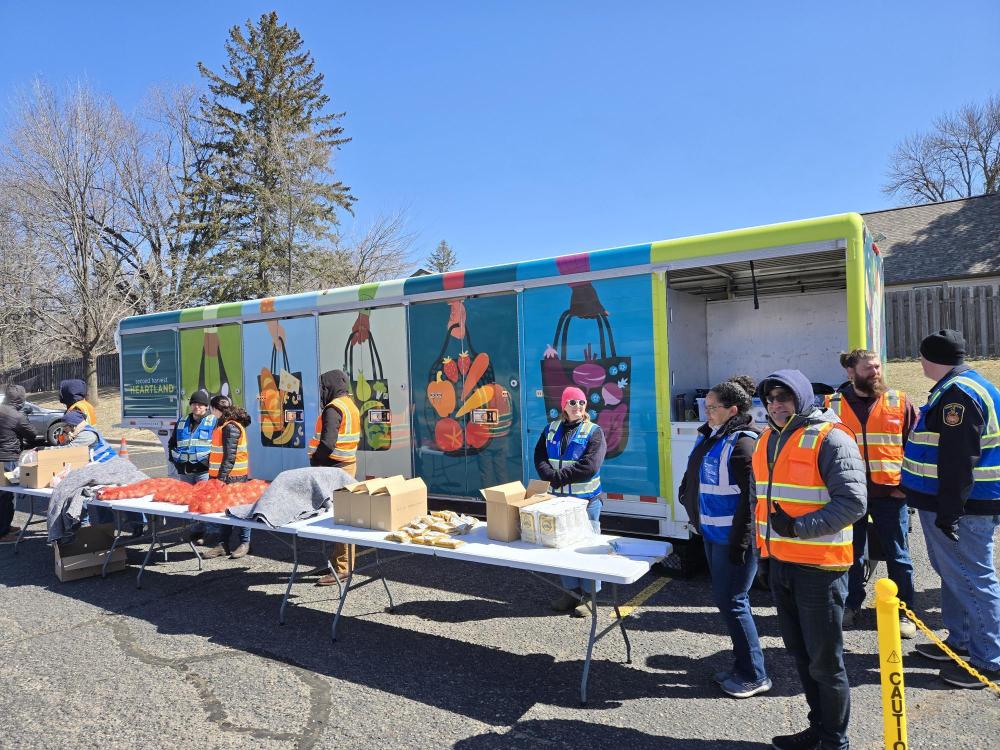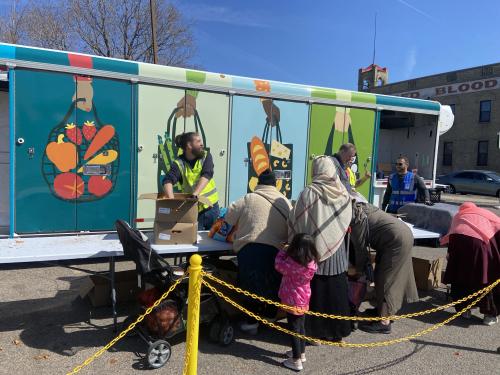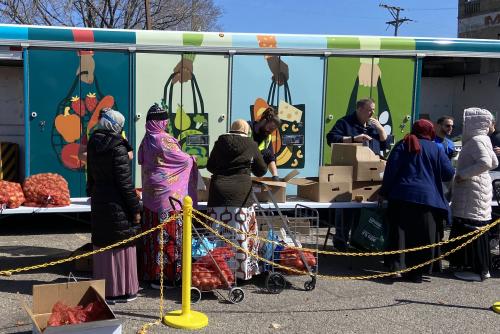
Getting Food Right Where It’s Needed with our New Mobile Trailer
As part of Second Harvest Heartland’s Make Hunger History initiative, we are building partnerships to get more of the right food, right where it’s needed. To do this, we have invested in a new mobile food distribution trailer that will help reach the communities most impacted by hunger.
“The mobile program is something that's brand new to the organization,” explained Partner Operations Specialist Joe Camhi. “It fills some gaps in communities that maybe don't have access to the standard brick and mortar food pantries.”
As head of the mobile distribution program, Joe says the winter was spent both researching areas of high need and identifying active partners or organizations in those areas who would be able to help host a mobile food distribution. “We're just now at a pretty good spot operationally to be able to go out to partners and start getting some of these events on the calendar,” said Joe. “We want to start really getting out into community, having people see the trailer and start inquiring about it so that we can get it out as much as possible.”

Families picking up food at a mobile distribution.
The mobile trailer, along with providing access to communities lacking food shelves, helps expand services in areas that already have food shelves, but could benefit from more food distribution opportunities. On March 27, Second Harvest Heartland held the first mobile distribution with Pillsbury United Communities’ Brian Coyle Center. This additional day of food distribution brought more food—specifically milk, fruits, and vegetables—to the Cedar-Riverside neighborhood. “They have produce distributions twice a month,” explained Joe. “So, we approached them thinking that they'd be an ideal partner because there's community that's already going there.”
During the first mobile distribution day at Brian Coyle, there were already at least 50 neighbors waiting outside to pick up food. Once the trailer arrived, the distribution saw a steady stream of visitors. So much so that, by the end of the distribution, the mobile trailer had served over 170 households. “It does feel like the word keeps spreading and keeps growing, so that as long as the trailer keeps showing up, the neighbors will as well,” said Joe. “I think the fact that people are showing up and the fact that our numbers are increasing with each subsequent event is definitely a positive. It definitely goes to show that there was obviously a need and people are making use of [the distributions].”

Neighbors collect onions and other fresh food items at mobile distributions.
The eventual goal is to have two mobile distribution trailers up and running four days a week in areas where there isn't otherwise another food distribution option for neighbors. “We know that the need is there, so we will find ways to make it work,” said Joe. “I think success looks like getting it out there and making sure it's getting used and accessed by neighbors as much as possible.”
